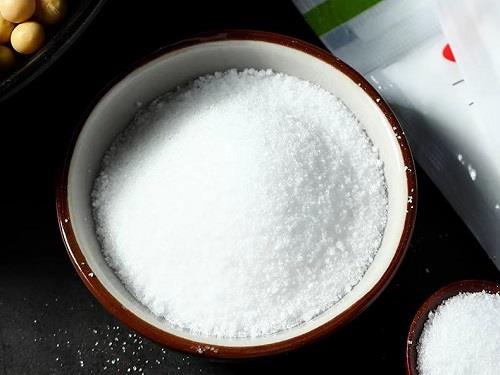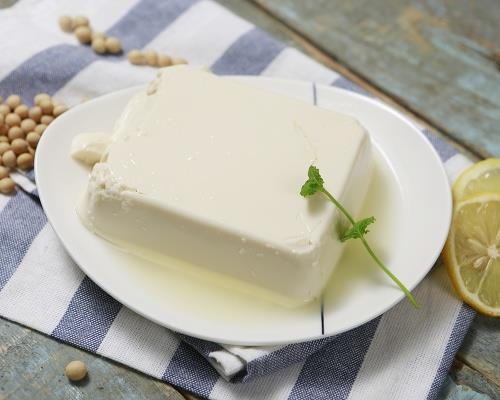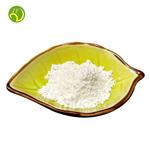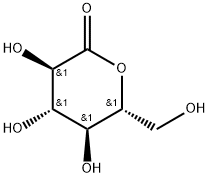D-(+)-Glucono-1,5-lactone: generalist in food and medicine
Jun 25,2024
Introduction
In our daily lives, the development of food and medicine is changing with each passing day, and various additives and raw materials are constantly being discovered and applied. Among them, D-(+)-Glucono-1,5-lactone (GDL or lactone), as an important compound, plays multiple roles in the food industry such as coagulant, stabilizer, sour agent, fresh-keeping agent, and preservative, and also shows its unique value in the field of medicine. In this paper, the definition, properties, production methods, application fields, and future development of gluconolactone will be introduced in detail.
Definition and nature
D-(+)-Glucono-1,5-lactone is a kind of organic compound that is prepared by oxidation of glucose to gluconic acid or its salts through purification, desalting, decolorizing, and concentrating. The chemical formula was C6H8O6 and the molecular weight was 176.12g/mol. It is a white crystal or crystalline powder, odorless, and tastes first sweet after bitter, sour taste. It is easily soluble in water (60g/100mL at room temperature), slightly soluble in ethanol (1g/100mL), and insoluble in ether. In an aqueous solution, GDL hydrolyzes to a balanced solution of gluconic acid and lactone, and the newly formulated 1% aqueous solution has a pH of 3.5, which becomes 2.5 after 2 hours.1

Preparation
The production methods of D-(+)-Glucono-1,5-lactone are various, including microbial fermentation, glucose oxidase, catalytic oxidation, and new UV/hydrogen peroxide method.
Microbial fermentation method: under specific conditions, Aspergillus Niger species NRRL3 was fermented in glucose solution, and lactone crystallization was obtained through filtration and post-treatment.2
Glucose oxidase method: Adding glucose oxidase and catalase to glucose solution, oxidizing glucose into a balanced solution of lactone and gluconic acid, and then obtaining lactone crystallization through post-treatment.
Catalytic oxidation method: the catalyst is added to the glucose aqueous solution, and the catalytic oxidation reaction is carried out under specific conditions to obtain the gluconic acid solution, and then the lactone product is obtained through the steps of concentration and crystallization.3
Ultraviolet/hydrogen peroxide method: This is a new advanced oxidation technology, that uses ultraviolet lamps to irradiate the glucose solution, and in the reaction process to add hydrogen peroxide, catalytic oxidation reaction, and finally get D-(+)-Glucono-1,5-lactone. This method has the advantages of a short production cycle, no pollution, low energy consumption, and high yield, and is suitable for industrial production.4
Food industry applications
D-(+)-Glucono-1,5-lactone is widely used in the food industry, mainly including the following aspects:
Coagulant
D-(+)-Glucono-1,5-lactone can be used as a coagulant for tofu, making the texture of tofu white and tender, without the use of brine or gypsum, and will not produce a bitter taste and protein loss.

Stabilizer
In dairy products, it can be used as a stabilizer to produce yogurt or cheese and other products to improve the stability and taste of the product.
Sour agent
Can be used for seasoning, added to vanilla, chocolate, bananas, and other sweet sherbet and jelly, as a sour agent to adjust the taste of food.
Preservatives and preservatives
It has a certain anti-corrosion effect, can extend the shelf life of food, and maintain the freshness and taste of food.
Pharmaceutical applications
In addition to the food industry, D-(+)-Glucono-1,5-lactone has also shown its unique value in the field of medicine. First of all, it is an important component of antidotes, which can be combined with toxic compounds and converted into water-soluble substances for easy excretion. Secondly, it participates in the metabolism and excretion process of a variety of drugs, and by combining with drugs, it makes drugs easier to eliminate in vitro. In addition, it also participates in the synthesis of bile acids in the liver and maintains the balance of bile acids. Most importantly, GDL is a precursor of glucuronic acid and is involved in the biosynthesis of glycoproteins and sulfates together with galacturonic acid. Therefore, in the field of medicine, GDL is widely used in the synthesis of antiviral drugs, glucocorticoids, and other drugs.5
Future Development and Prospects
With the advancement of science and technology and the deepening of research, D-(+)-Glucono-1,5-lactone will be more widely used in the food industry and medicine. On the one hand, researchers will continue to explore new production methods and technologies, improve output and quality, and reduce production costs; On the other hand, researchers will study new applications and new functions in the food industry to develop more foods with nutritional and health functions. At the same time, in the field of medicine, it will also become an important raw material for the synthesis of new drugs and the treatment of diseases.
References
[1].Reese, E.; Parrish, F.; Ettlinger, M., Nojirimycin and d-glucono-1, 5-lactone as inhibitors of carbohydrases. Carbohydrate Research 1971, 18 (3), 381-388.
[2].Parke, S. A.; Birch, G. G.; MacDougall, D. B.; Stevens, D. A., Tastes, structure and solution properties of D-glucono-1, 5-lactone. Chemical senses 1997, 22 (1), 53-65.
[3].Hackert, M.; Jacobson, R., The crystal and molecular structure of D-glucono-(1, 5)-lactone. Acta Crystallographica Section B: Structural Crystallography and Crystal Chemistry 1971, 27 (1), 203-209.
[4].Wa?aszek, Z.; Horton, D.; Ekiel, I., Conformational studies on aldonolactones by NMR spectroscopy. Conformations of D-glucono-1, 5-lactone and D-mannono-1, 5-lactone in solution. Carbohydrate Research 1982, 106 (2), 193-201.
[5].Tajmir-Riahi, H., Carbohydrate complexes with alkaline earth metal ions. Interaction of D-glucono-1, 5-lactone with the Mg (II), Ca (II), Sr (II), and Ba (II) cations in the crystalline solid and aqueous Solution. Journal of inorganic biochemistry 1990, 39 (1), 33-41.
- Related articles
- Related Qustion
- Gluconolactone: food additive Apr 29, 2022
D-(+)-Glucono-1.5-lactone is a naturally occurring polyhydroxy acid (PHA) with metal chelating, moisturizing and antioxidant activity. Gluconolactone can be produced by enzymatic oxidation of D-glucos
- Mechanism of GdL Mar 7, 2022
For many manufacturers of undried or semidry sausages, Glucono-delta-Lactone(GdL) is the preferred acidulant. It is applied as a crystalline powder that is freely soluble in water, where it hydrolyzes to gluconic acid within a few hours and
Progesterone is an indispensable member of the female reproductive system, plays a pivotal role in the pregnancy, development, and maintenance of life.....
Jun 25,2024APICurcumin is a natural compound derived from the rhizome of the ginger family, which has a wide range of biological activities and pharmacological effects.....
Jun 25,2024APID-(+)-Glucono-1,5-lactone
90-80-2You may like
D-(+)-Glucono-1,5-lactone manufacturers
- delta-Gluconolactone
-

- $0.00 / 25Kg/Drum
- 2024-09-11
- CAS:90-80-2
- Min. Order: 1KG
- Purity: 99%
- Supply Ability: 1000mt
- D-(+)-Glucono-1,5-lactone
-

- $6.00 / 1kg
- 2024-09-11
- CAS:90-80-2
- Min. Order: 1kg
- Purity: 99%
- Supply Ability: 2000KG/Month
- D-(+)-Glucono-1,5-lactone
-

- $0.00 / 1kg
- 2024-09-11
- CAS:90-80-2
- Min. Order: 1kg
- Purity: 99%
- Supply Ability: 20t




